This post may contain affiliate links. Please read our disclosure policy.
Follow these directions and learn how to make salad dressing. Below, I show you two simple methods for homemade dressings. Whether tossed with greens or used as a dipping sauce on appetizer platters, these flavor bombs make everything taste so good.
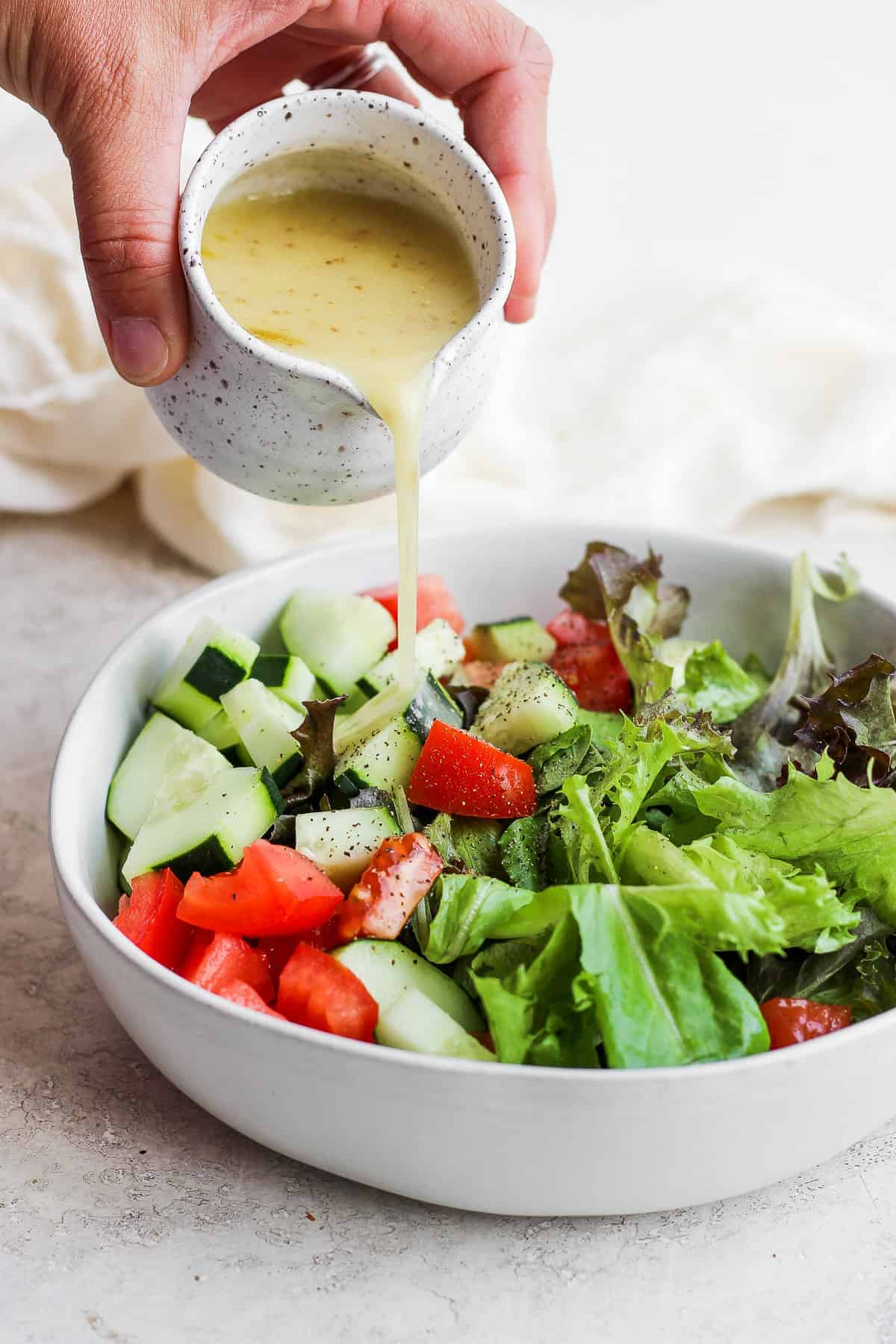
Homemade salad dressing is economical and customizable. Plus, with homemade, you avoid the extra sodium, added sugar, or artificial sweeteners in bottled dressings. Additionally, you steer clear of a long list of barely pronounceable ingredients added to improve the texture and longevity of store-bought dressings. Let’s go.
Ratio for making vinaigrette
The standard ratio for plain vinaigrette is 1 part vinegar (or another acid like lemon juice) to 3 parts oil. Add salt and pepper (if you want. ) Then shake. That’s it. But please, experiment with ratios. Especially if you love the taste of say, balsamic vinegar, you might add more vinegar and less oil. Now, here are my two go-to recipes.
Two types of homemade salad dressing
Broken vinaigrette
This is the super-fast, mix, shake, and pour version. All you need are a few ingredients and a tightly lidded jar or bottle of some sort. A mason jar or any recycled jar – a pickle or jam jar – will do.
- First, measure out your ingredients. Remember beyond the basics, you can make this as simple or as complex as you want. This is a mix I find delicious: grapeseed oil, olive oil, balsamic vinegar, lemon juice, mustard, minced shallows, salt and pepper.
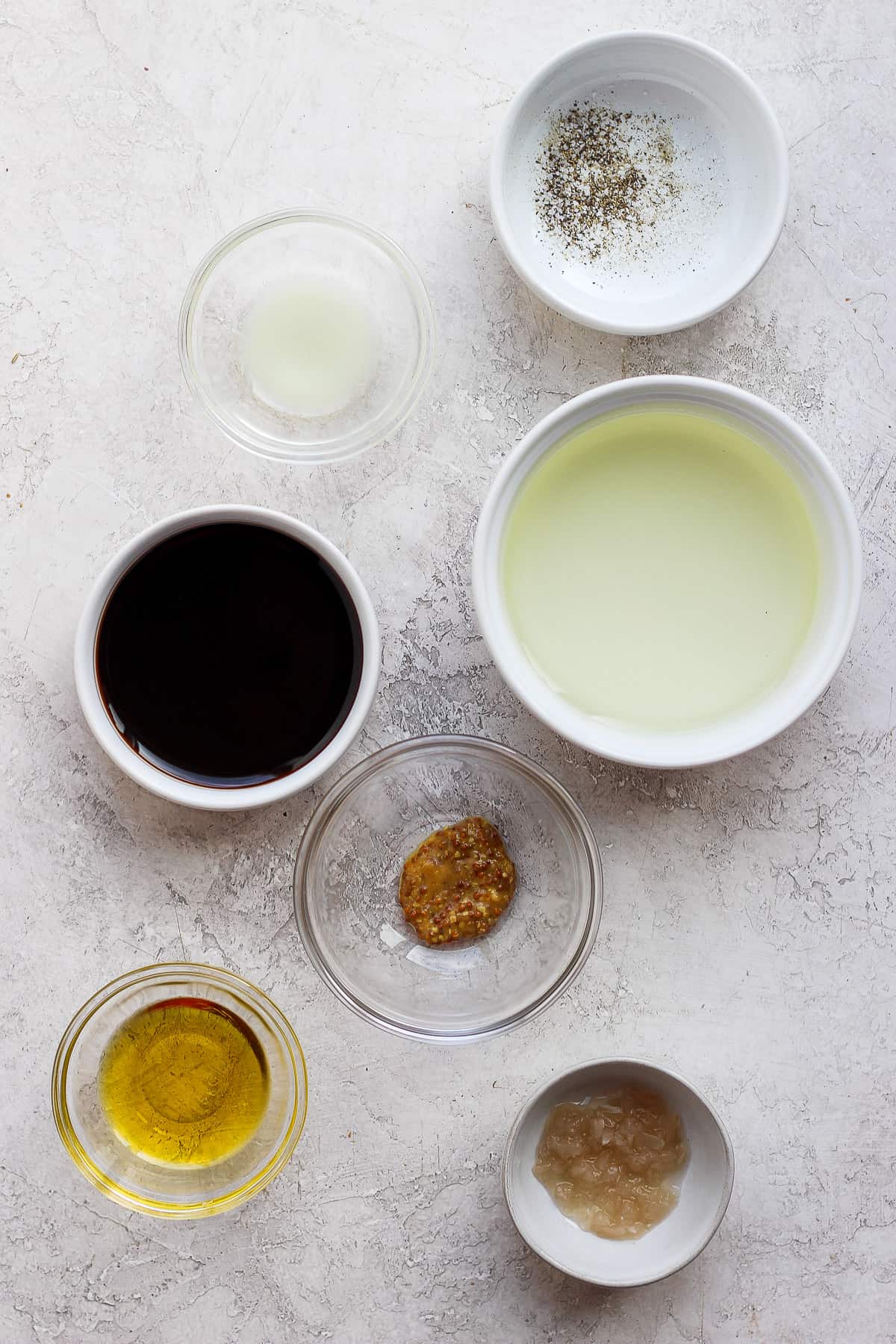
- Now, place everything in a jar and seal tightly. You can make this ahead and refrigerate, too.
- Then when ready to use, shake vigorously, and pour.
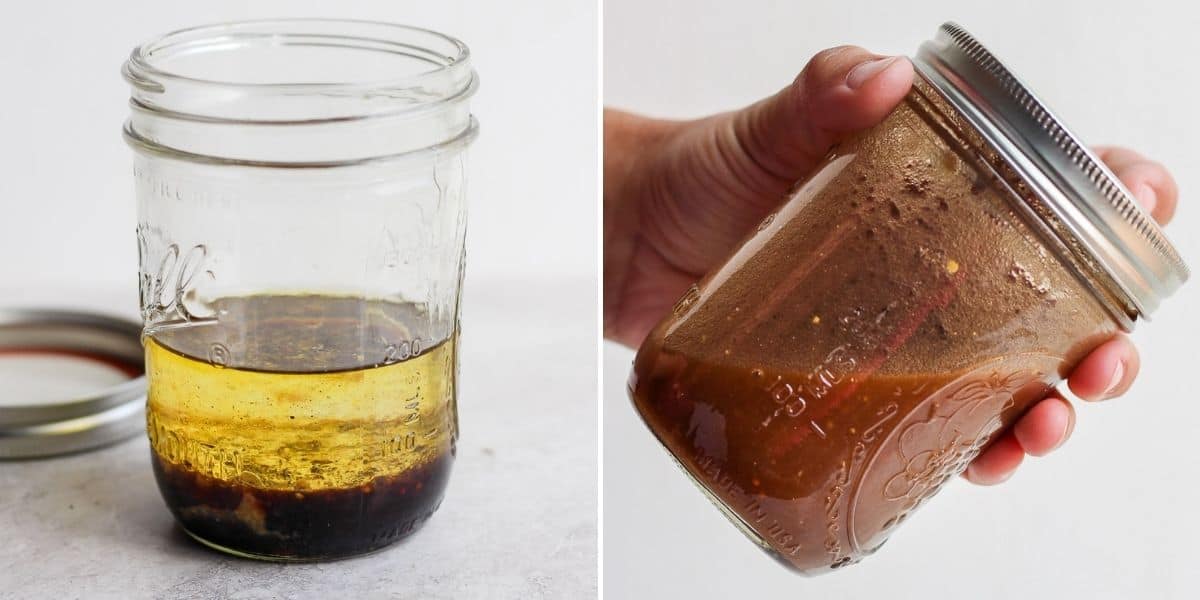
- See how the shaken ingredients will take on the creamy, thick look of salad dressing.

Emulsified vinaigrette
This version takes a bit longer and requires more equipment. However, the payoff is a faster blending of flavors and a very smooth emulsification that lasts longer than the shaken dressing.
- To begin, combine all ingredients except the oils in a food processor or blender.
- Then, blend the ingredients until pureed, about 30 seconds.
- Now, slowly stream in the oils and allow the mixture to blend completely.
- And finally, pour into a mason jar or dressing container and use as desired.
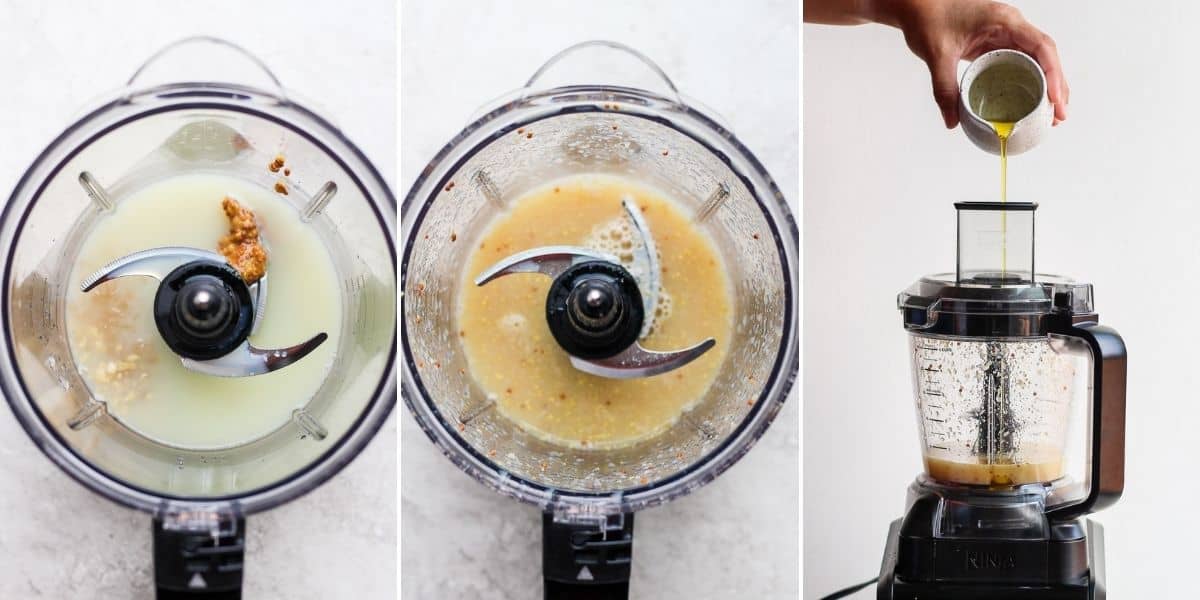
Tips for making homemade salad dressing
- Enhance the flavor of the vinaigrette by adding fresh herbs. This is a great base that you can build on by adding rosemary, thyme, basil, or tarragon. For this purpose, add the minced herbs after the oil has been poured in and blend briefly.
- Substitute mustard powder in place of fresh mustard if needed. Reduce the amount of mustard power by half. Keep in mind, mustard of any sort helps to make the dressing pop.
- Use an aged balsamic vinegar (8-18 year) if you can find one. Not only will this help to enhance the flavor of the vinaigrette, but it will also allow you to use less oil. Alternatively, for Asian flavors try rice wine vinegar and choose neutral oils over olive oil
- Let the flavors mix and marry for maximum pow. Instead of using immediately, allow the vinaigrette to sit in the fridge for a day and the flavors will intensify. Generally, vinaigrettes are ready to enjoy immediately but do get better after resting, especially the broken vinaigrette.
Try the dressing to these salads
- Peach Salad
- Strawberry Caprese Salad
- Apple Walnut Salad
- Avocado Blueberry Salad
- Avocado Caprese Salad
- Beet Orange Salad
- Fall Harvest Salad
- Corn Tomato Avocado Salad
- Mediterranean Chopped Salad
- Autumn Pear Salad
- Strawberry Arugula Salad
- Shaved Brussels Sprout Salad
- Butternut Squash Quinoa Salad
- Tomato Avocado Cucumber Salad
- Watermelon Cucumber Salad
Frequently asked questions
A plain vinaigrette with only garlic can last for weeks. However, if you add shallots, fresh herbs, or fresh fruit juice, the mixture is best used within a few days.
Because olive oil has a definite taste. However, if that is what you like, use 100 percent olive oil. Specifically, in these recipes, I combined olive oil with neutral oils to let other flavors shine through.
Interestingly, besides deepening the flavor, mustard helps the oil and vinegar emulsify.
Surprisingly, no! Indeed, studies have shown that eating vegetables with some added fat helps your body fully absorb all the micronutrients in vegetables. Plus, it tastes great!
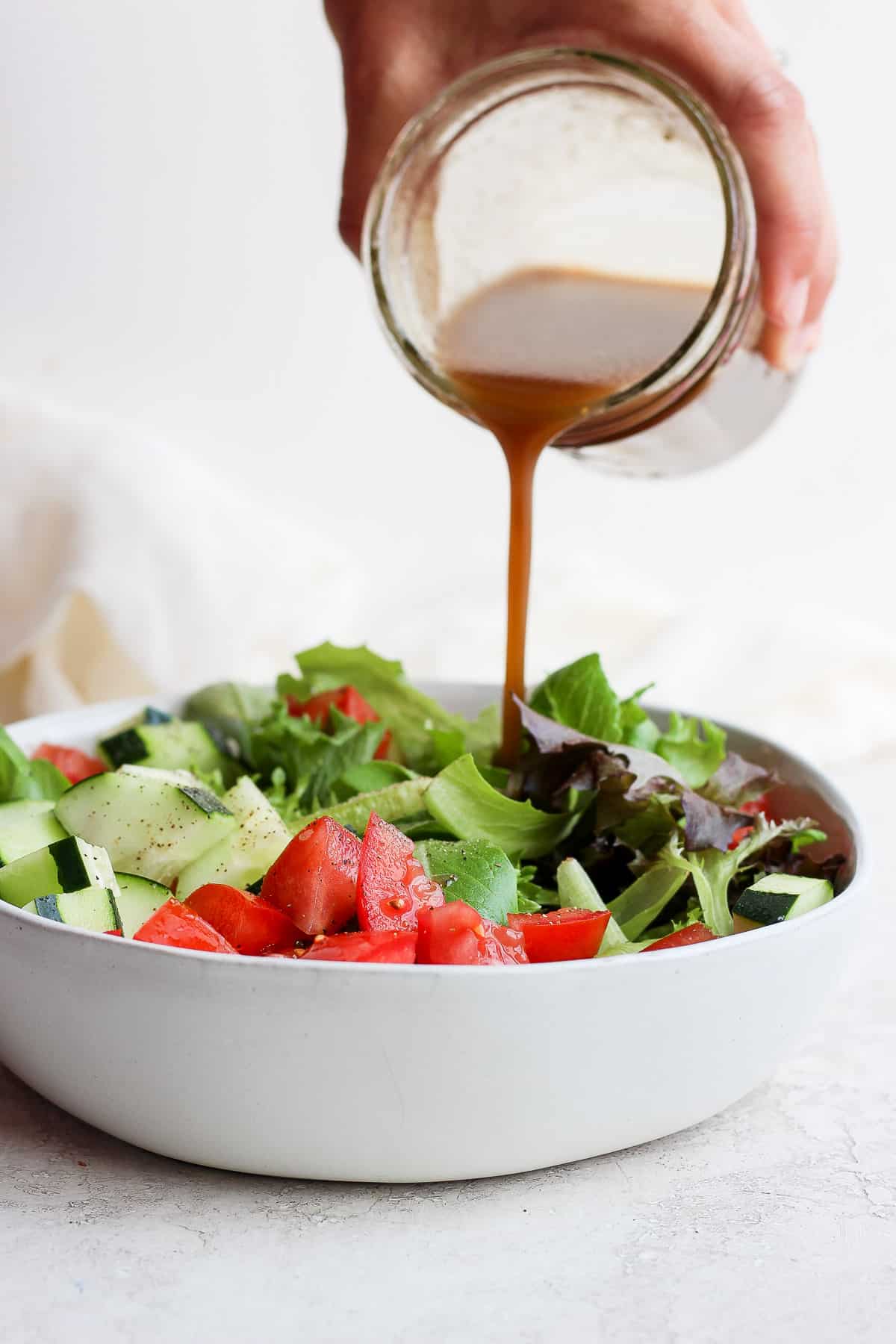
Honestly, homemade salad dressing is one of those secret ingredients that make food taste bolder, brighter, and better than store-bought. Furthermore, beyond salads, consider splashing homemade dressing over cooked greens, or using it as a marinade for chicken breasts.
For more cooking tutorials, check out:
- How to Make Croutons
- How to Cook Rice
- How to Freeze Garlic
- How to Cut an Onion
- How to Cut an Avocado
- How to Cook Chickpeas
- How to Make Oatmeal
If you’ve found this cooking resource for How to Make Salad Dressing helpful or if you’ve tried any recipe on FeelGoodFoodie, then don’t forget to rate the recipe and leave me a comment below! I would love to hear about your experience with this technique. And if you snapped some shots of it, share it with me on Instagram so I can repost on my stories!
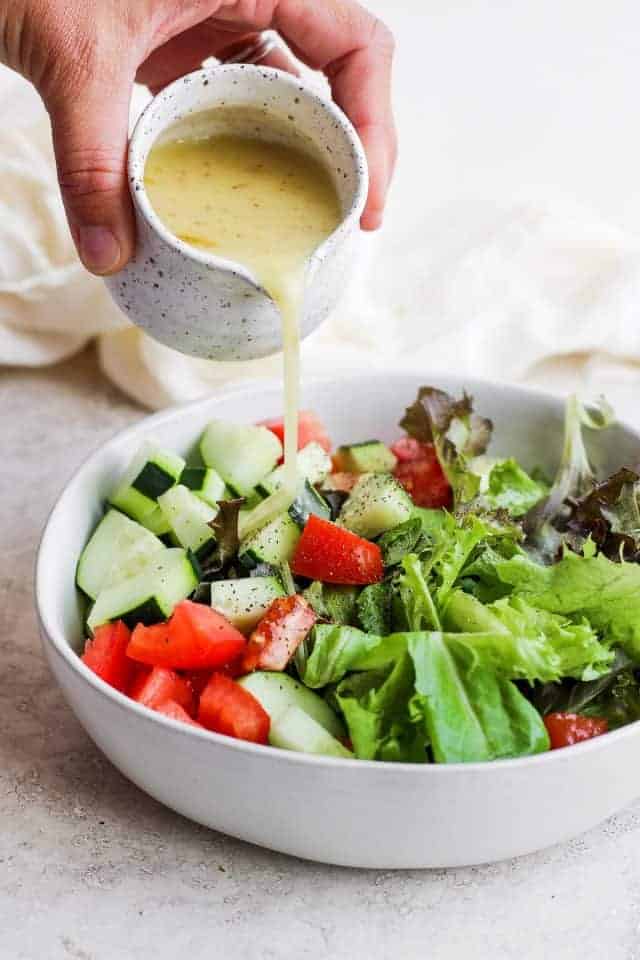
How to Make Salad Dressing
Ingredients
Broken Dressing
- ½ cup oil grapeseed, vegetable, canola
- 1 tablespoon olive oil
- 1 teaspoon lemon Juice
- ¼ cup balsamic vinegar
- ¼ shallot minced
- ½ teaspoon mustard stone ground preferred
- Pinch salt
- Pinch black pepper
Instructions
Broken Dressing
- Place everything in a mason jar and seal tightly, shake well when ready to use.
Emulsified Dressing
- Combine all ingredients except the oils in a food processor or blender
- Blend the ingredients until pureed, about 30 seconds
- Slowly stream in the oils and allow mixture to blend completely.
- Pour into mason jar or dressing container, and use as desired.
Notes
Nutrition
Nutrition information provided is an estimate. It will vary based on cooking method and specific ingredients used.
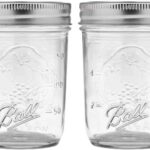
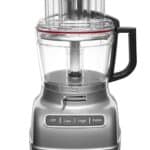
Re Mary Kivi’s “What is TB” OR Tb or Tbsp” for that matter
In many cookbooks a capital “T” automatically designates a Tablespoon. This is also written as “Tbsp” easily recognizable as Tablespoon.
Therefore it will now stand to reason that tsp (always with a “small ‘t’) will always be recognized as teaspoon.
I’m mking this loos awesome
Hope you love it!
Is 1/4 cup of dressing equivalent to one serving of this salad dressing? How many TB?
One serving is equivalent to an eight of the recipe!
Tried your. Salad dressing recipes love it 😀
I’m so happy to hear that! Yay!